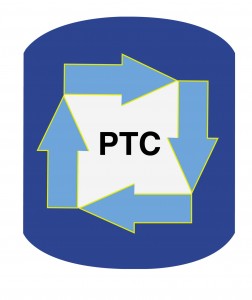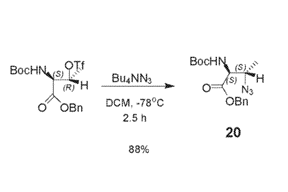Scott Sherwood, a highly creative scientist who attended our 2-day course “Industrial Phase-Transfer Catalysis,” solved a problem that usually renders anion exchange resins as impractical for using them as polymer-bound phase-transfer catalysts. Scott’s innovation is as described in Sherwood; S. (Eagle US 2 LLC) US Patent 10,968,153, 06-Apr-2021.
As many of you are aware, the most common “strong base anion exchange resins” are quaternary ammonium salts that are bound to crosslinked polystyrene that are produced by chloromethylating crosslinked polystyrene followed by amination using a tertiary amine (most commonly trimethylamine).
As a loyal reader of the PTC Tip of the Month newsletter, you are well aware that the most common class of phase-transfer catalysts. Also as a loyal reader of the PTC Tip of the Month newsletter, you are aware that separation of quaternary ammonium phase-transfer catalysts from the product is an important requirement that is sometimes challenging.
For that reason, strong base anion exchange resins that are essentially polymer-bound quaternary ammonium salts, have been studied as phase-transfer catalysts since the early days of PTC in the 1970’s since such these insoluble solid resins provide the automatic benefit of separation of the quaternary ammonium phase-transfer catalyst from the product when the product is liquid or dissolved in a liquid organic solvent.
As we discuss in the course “Industrial Phase-Transfer Catalysis”, one of the major challenges of using commercial strong base anion exchange resins as phase-transfer catalysts has to do with the hydrophilic-lipophilic balance inside of the resin matrix.
Even though the polymer backbone of the anion exchange resin is hydrophobic crosslinked polystyrene, the polymer-bound benzyl trimethyl ammonium functional group is quite hydrophilic. The characteristics of strong base anion exchange resins include a high water content (“water retention”) wherein water typically constitutes 30 weight% or more of the total weight of the resin.
This high water-content is a barrier for non-polar organic solvents to penetrate (“swell”) the anion exchange resin, especially “gel” resins. Common organic solvents used in PTC systems such as toluene, do not penetrate the interior of the resin bead and therefore most of the anions paired with the quaternary ammonium cations in the interior of the bead are not available for reaction with reactant dissolved in the toluene. Even more polar solvents that are immiscible with water, such as chlorinated hydrocarbons, do not penetrate into the interior of the bead due to the high water content.
As we teach in our course “Industrial Phase-Transfer Catalysis,” macroporous strong base anion exchange resins with low ring substitution (e.g., only 40% of the benzene rings of the polystyrene are chloromethylated and quaternized) can be effective polymer-bound phase-transfer catalysts (see for example Arrad, O.; Sasson, Y.; J. Org. Chem., 1989, 54, 4993). The problem with low ring substitution is that the “capacity” (density of quaternary ammonium groups per unit volume) is low and a lot of resin is required for a small amount of conversion.
The reason that strong base macroporous anion exchange resins work better than strong base gel resins for phase-transfer catalysis is that the pores/channels in the macroporous resins for liquid to penetrate the interior of the bead are much wider and enable access to the internal quaternary ammonium sites.
In Scott Sherwood’s patent, he reported the use of Purolite PPA 500PLUS for the replacement of bromide with chloride, for example to remove bromide from 1-bromo-2-chloroethane by converting it into 1,2-dichloroethane. PPA 500PLUS is a strong base macroporous anion exchange resins with a reasonably high capacity (1.15 eq/L). The classical problem of using string base anion exchange resins as polymer-bound phase-transfer catalysts is present when using PPA 500PLUS since its water content is typically 57%-63% water by weight.
The inventor solved this problem was by removing the water either by adding methanol to the resin then azeotroping off the water to achieve a water content of 3% or so, or by purging the resin with an inert gas (nitrogen) to reduce the water content.
When the water content was reduced to 3%, the bromide content was reduced by 97.5% after 1 hour at 90 C using the dried PPA 500PLUS (using a mixture of tetrachloroethylene and trichloroethane as solvent) and 98.5% after 22 hours. When the resin was not dried (used as-is) with 54% water content, the bromide content was reduced by only 5% after 1 hour at 90 C and only 64% after 22 hours. Clearly, the drying of the resin made a huge difference in the efficacy of the commercial macroporous strong base anion resin as a polymer-bound phase-transfer catalyst.
Scott Sherwood demonstrated the use of this method in both flask batch and fixed-bed column configurations. The fixed-bed column system was operated at 60 C and achieved 90%-92% conversion consistently in 5 samples taken from 53 hours to 118 hours of operation.
This is a patent worth studying.
If you too would like to benefit from the same high quality PTC training that Scott Sherwood enjoyed, now contact Marc Halpern of PTC Organics to inquire about bring the 2- day course “Industrial Phase-Transfer Catalysis” to your company, either in person at your location or by videoconference.

